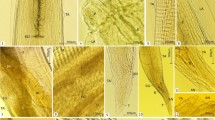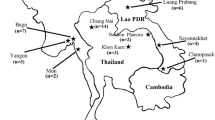Abstract
Family: Ascaridae as a whole is distributed among Africa and adjacent regions and in many areas of the world. The nematode Ascaridia galli is one of the most pathogenic and economically important parasites of poultry. The adult affect the small intestine of the hosts feeding on digested food materials. Its control costs million dollars annually. The genomic DNA was extracted from nematode parasites, A. galli, from specific host, native chickens. The polymerase chain reaction (PCR) was applied to ensure that the DNA content aids in the further studies. Two primers were used in the PCR reactions. The two primers were screened, only the second primer gave total amplified fragment markers 818 bp. The gene sequences obtained from Egyptian A. galli was compared with another one of accession number (AY587609) showing that the sequence was similar in some points from 346 to 1244 sequence, to make a phylogenetic relationships of A. galli with other nematodes on the data base showing that it was to some extent similar to Heterorhabditis spp.




Similar content being viewed by others
References
Alasaad S, Pascucci I, Jowers MJ, Soriguer RC, Zhu XQ, Rossi L (2012) Phylogenetic study of Setaria cervi based on mitochondrial cox1 gene sequences. Parasitol Res 110(1):281–285. doi:10.1007/s00436-011-2486-1
Amor N, Farjallah S, Merella P, Said K, Ben Slimane B (2011) Molecular characterization of Hysterothylacium aduncum (Nematoda: Raphidascaridae) from different fish caught off the Tunisian coast based on nuclear ribosomal DNA sequences. Parasitol Res 109(5):1429–1437. doi:10.1007/s00436-011-2391-7
Anderson RC, Chabaud AG, Willmott S (2009) Keys to the nematode parasites of vertebrates (archival volume). CAB International, Wallingford
Barrett J (2001) Biochemistry of helminthes. In: Chowdhury N, Tada I (eds) Perspectives on helminthology. Science, Enfield, pp 309–334
Campbell BE, Tarleton M, Gordon CP, Sakoff JA, Gilbert J, McCluskey A, Gasser RB (2011) Norcantharidin analogues with nematocidal activity in Haemonchus contortus. Bioorg Med Chem Lett 21:3277–3281
Chilton NB, Gasser RB, Beveridge I (1997) Phylogenetic relationships of Australian strongyloid nematodes inferred from ribosomal DNA sequence data. Int J Parasitol 27:1481–1494
Ewen-Campen B, Schwager EE, Extavour CG (2010) The molecular machinery of germ line specification. Mol Reprod Dev 77:3–18
Fitch DH, Thomas WK (1997) Evolution. In: Riddle DL, Blumenthal T, Meyer BJ, Priess JR (eds) C. elegans II. Cold Spring Harbor Laboratory, New York, pp 815–850
Gasser RB, Chilton NB, Hoste H, Beveridge I (1993) Rapid sequencing of rDNA from single worms and eggs of parasitic helminths. Nucleic Acids Res 21:2525–2526
Hoste H, Chilton NB, Gasser RB, Beveridge I (1995) Differences in the second internal transcribed spacer (ribosomal DNA) between five species of Trichostrongylus (Nematoda: Trichostrongylidae). Int J Parasitol 25:75–80
Jex AR, Liu S, Li B, Young ND, Hall RS, Li Y et al (2011) Ascaris suum draft genome. Nature 479:529
Jordanova R, Radoslavov G, Fischer P, Torda A, Lottspeich F, Boteva R, Walter RD, Bankov I, Liebau E (2005) The highly abundant protein Ag-lbp55 from Ascaridia galli represents a novel type of lipid-binding proteins. J Biol Chem 280(50):41429–41438
Keiser J, Utzinger J (2010) The drugs we have and the drugs we need against major helminth infections. Adv Parasitol 73:197–230
Lee I, Lehner B, Crombie C, Wong W, Fraser AG, Marcotte EM (2008) A single gene network accurately predicts phenotypic effects of gene perturbation in Caenorhabditis elegans. Nat Genet 40:181–188
Lin Q, Li HM, Gao M, Wang XY, Ren WX, Cong MM, Tan XC, Chen CX, Yu SK, Zhao GH (2012) Characterization of Baylisascaris schroederi from Qinling subspecies of giant panda in China by the first internal transcribed spacer (ITS-1) of nuclear ribosomal DNA. Parasitol Res 110(3):1297–1303. doi:10.1007/s00436-011-2618-7
Lv S, Zhang Y, Zhang L, Liu Q, Liu HX, Hu L, Wei FR, Steinmann P, Graeff-Teixeira C, Zhou XN, Utzinger J (2012) The complete mitochondrial genome of the rodent intra-arterial nematodes Angiostrongylus cantonensis and Angiostrongylus costaricensis. Parasitol Res 111(1):115–123. doi:10.1007/s00436-011-2807-4
Ramadan HH, Znada ANY (1991) Some pathological and biochemical studies on experimental ascaridiasis in chickens. Nahrung 35:71–84
Soulsby EJL (1982) Helminths, arthropods and protozoa of domesticated animals, 7th edn. Bailliere Tindall, London, pp 164–175
Tamura K, Dudley J, Nei M, Kumar S (2007) MEGA4: molecular evolutionary genetics analysis (MEGA) software version 4.0. Mol Biol Evol 24(8):1596–1599. http://mbe.oxfordjournals.org/
Wang ZQ, Li LZ, Jiang P, Liu LN, Cui J (2012) Molecular identification and phylogenetic analysis of Trichinella isolates from different provinces in mainland China. Parasitol Res 110(2):753–757. doi:10.1007/s00436-011-2549-3
Author information
Authors and Affiliations
Corresponding author
Rights and permissions
About this article
Cite this article
Bazh, E.K.A. Molecular characterization of Ascaridia galli infecting native chickens in Egypt. Parasitol Res 112, 3223–3227 (2013). https://doi.org/10.1007/s00436-013-3498-9
Received:
Accepted:
Published:
Issue Date:
DOI: https://doi.org/10.1007/s00436-013-3498-9




